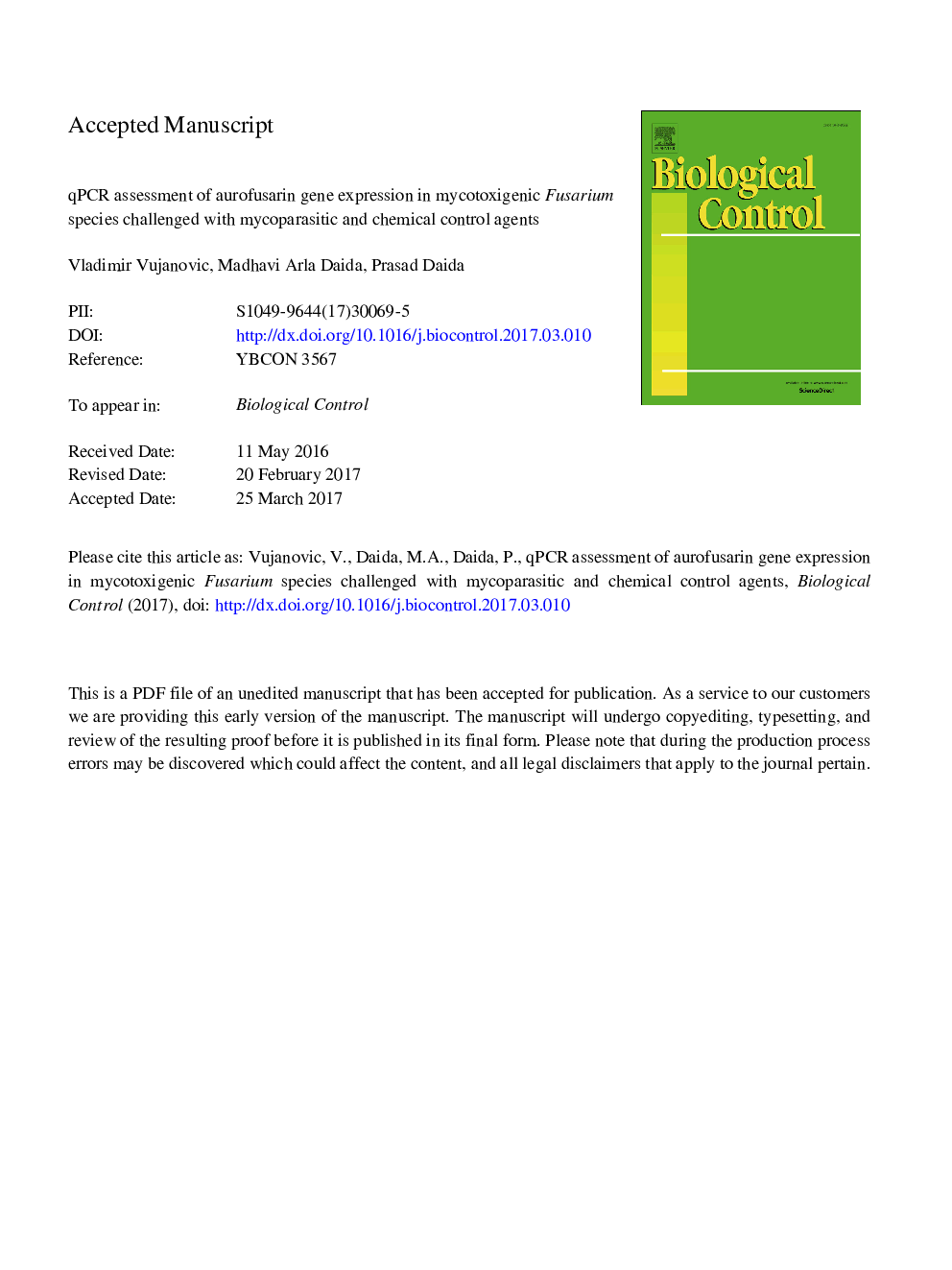| Article ID | Journal | Published Year | Pages | File Type |
|---|---|---|---|---|
| 5760714 | Biological Control | 2017 | 28 Pages |
Abstract
Sphaerodes mycoparasitica is a Fusarium-specific mycoparasite and biocontrol agent against Fusarium head blight (FHB) in cereals. Fusarium spp. produce harmful deoxynivalenol (DON), zearalenone (ZEA) and aurofusarin (AUR) mycotoxins. This study focuses on aurofusarin (AUR) as a poorly studied dimeric polyketide-derived mycotoxin synthesized by the polyketide synthases (PKS). AUR provides a red pigmentation to the Fusarium's cell wall. It is a proven contaminant in food and feed posing a health risk to consumers. To determine if the production and/or expression level of PKS genes influence the changes in mycelia coloration, AUR-red pigmented Fusarium spp. were co-cultured with S. mycoparasitica and Trichoderma harzianum mycoparasitic biocontrol agents compared to tebuconazole (Folicur®) fungicide, as a control. In this study, a set of six specific qPCR primers were designed. Results revealed the presence of PKS12 gene coding for AUR biosynthesis in F. graminearum 3ADON and 15ADON chemotypes, F. culmorum and F. avenaceum, unlike other tested F. proliferatum, F. oxysporum, F. arthrosporoides strains. S. mycoparasitica was most effective in reducing the AUR in F. graminearum 3ADON, F. graminearum 15ADON, F. culmorum and F. avenaceum followed by T. harzianum and tubaconazole. Furthermore, qPCR transcription results confirmed that the F. avenaceum mycelia's shift in color from dark red to light red and white is associated with respective heat shock tolerance and virulence which corresponds to the level of AUR biosynthesis or PKS12 gene expression. S. mycoparasitica could be used as an effective biocontrol agent against Fusarium pathogens to reduce AUR production.
Related Topics
Life Sciences
Agricultural and Biological Sciences
Agronomy and Crop Science
Authors
Vladimir Vujanovic, Madhavi Arla Daida, Prasad Daida,
